Fuse 8 n’ Kate: They Were Strong and Good by Robert Lawson
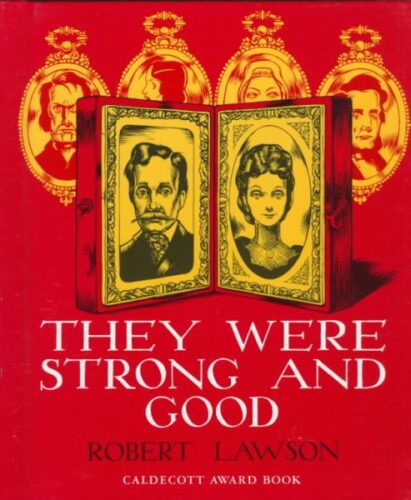
“I’m sorry, you’re PROUD? What are you ‘proud’ of exactly? Your family owned slaves, killed Native Americans, fought for the Confederacy, and almost killed a parrot! So I don’t know what you’re proud of!!!”
Those of you familiar with today’s book are whistling under your breath and saying quietly, “Here we go.” Those of you unfamiliar? Prepare to meet the very first book on this podcast to receive the lowest rating we have ever assigned. If we could give negative numbers, we would. Inarguably the most offensive Caldecott Award winner to date, Kate requested that we do a stinker and I? I overdelivered.
ADVERTISEMENT
ADVERTISEMENT
Please note too that Debbie Reese has written extensively on this book. Her thoughts can be found in the piece Robert Lawson’s “Indians–tame ones” and slaves in Minnesota.
[CONTENT WARNING: This post will contain racist words and imagery in the course of these Show Notes]
Listen to the whole show here on Soundcloud or download it through iTunes, Stitcher, Spotify, Google Play, PlayerFM, or your preferred method of podcast selection.
Show Notes:
Kate actually screamed “OH NO!” from the other room in the course of reading this book. She’s never done that before.
As far as I’m concerned, this post on the blog Collecting Children’s Books is the seminal text on They Were Strong and Good. And here is the 1940 press release on this book that I mention in the course of this podcast. Take a look and compare it to press releases sent to us today. Note the recommended age range too.
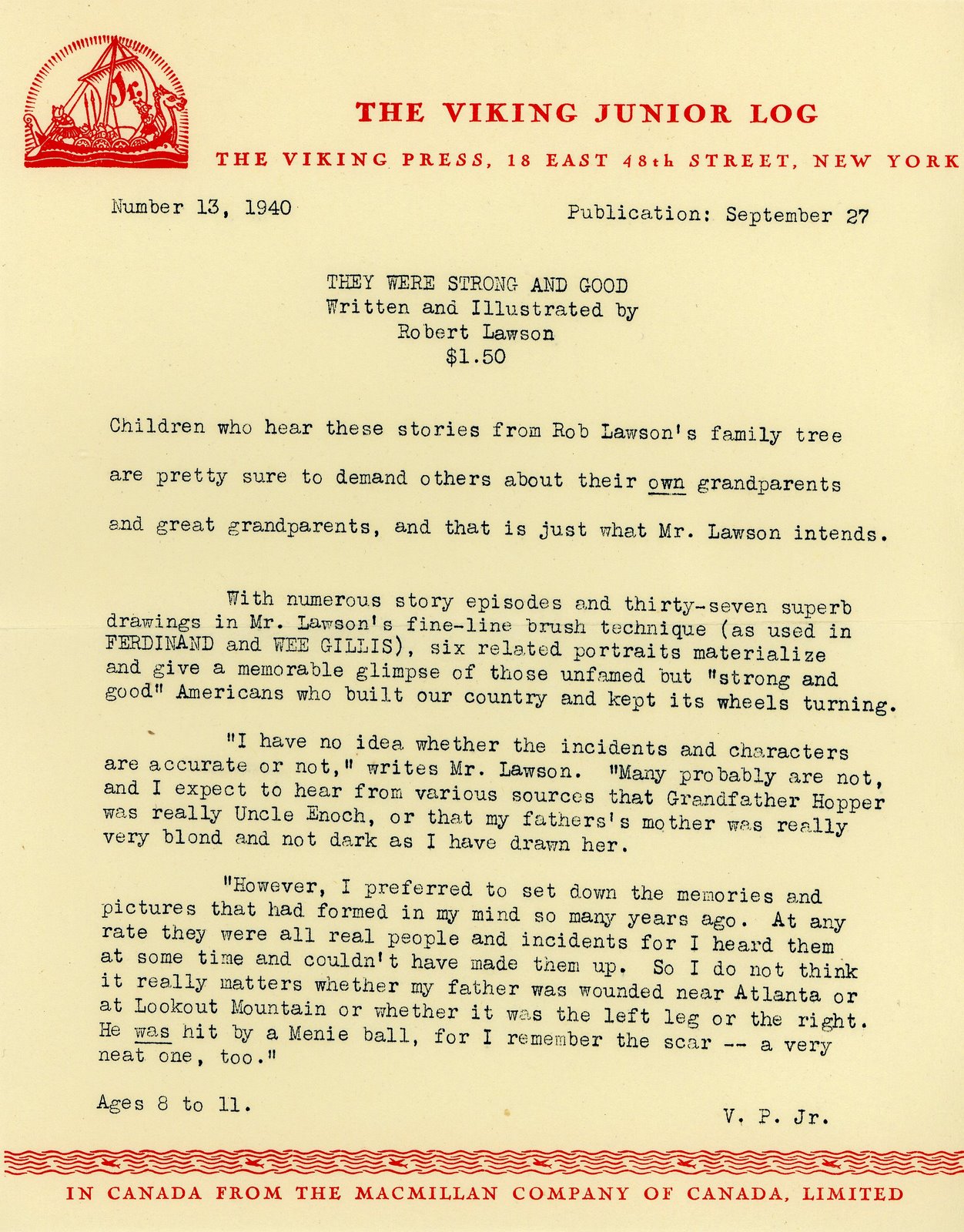
There are few things in this book we liked. I’m kinder to the original endpapers than Kate is. Of course, the fact that this book had these endpapers should have tipped me off immediately to the fact that it was an original edition and not the one with minor language changes:
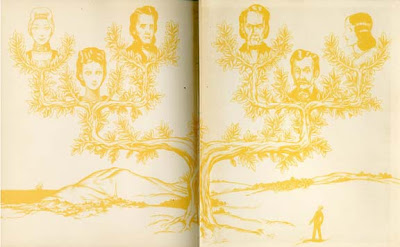
The first racist image in the book comes early and snowballs from there:
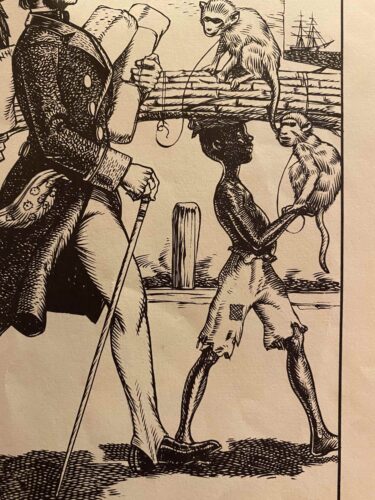
Paterson, NJ in the book (The Lorax has nothing on that image):
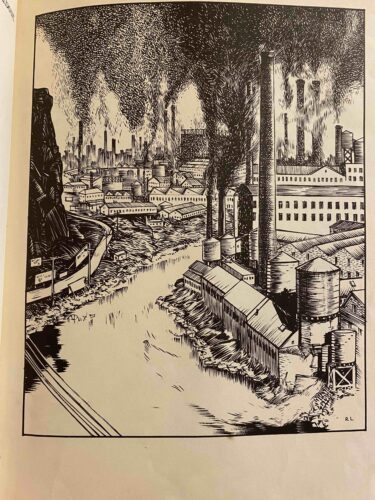
And Paterson, NJ and its river today . . .

This picture was legitimately good. Unfortunately it’s immediately followed by the worst in the book.
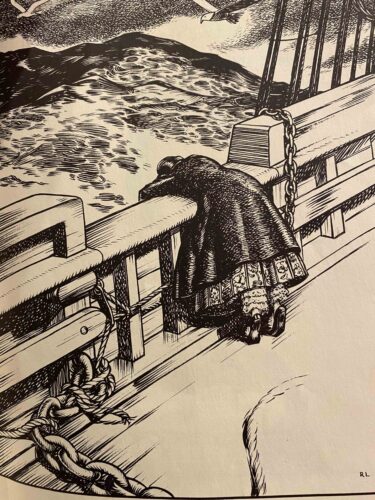
This is, hands down, the worst part of the book to me (but it’s a close race). This may, in fact, be one of the most offensive pictures in American picture book history, and it is CERTAINLY the most racist in his history of the Caldecott Award.
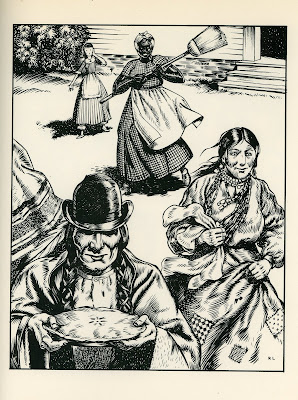
This is the scene where the author’s father’s mother looks as this man and thinks he’s the kind of guy she’s looking for in a husband.
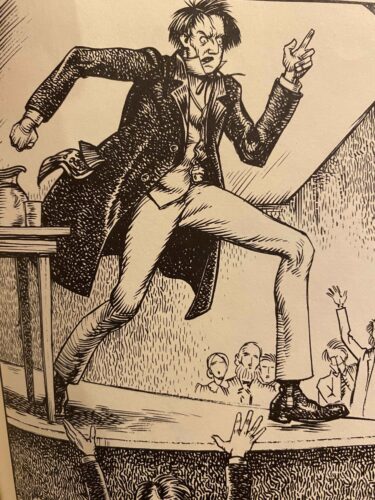
I’m still just floored that I handed Kate the original book. You could conduct an entire unit on the text changes and what they say about early vs. mid-20th century attitudes towards race in children’s literature and never run out of things to discuss.
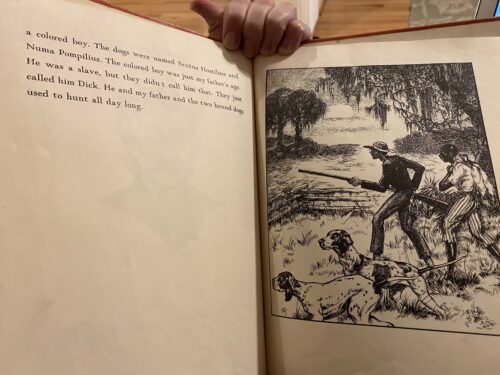
If you had asked me today if I could name a single picture book that contains a Confederate Flag I would have said no, until Kate pointed this out to me.
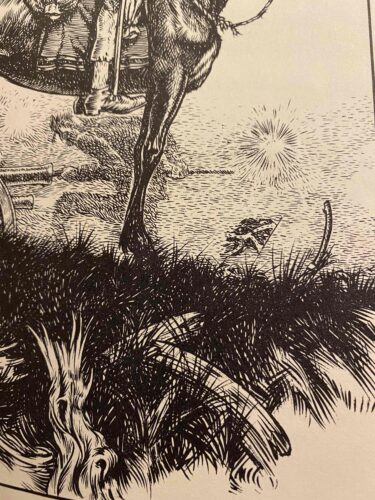
So here’s the part that really gets to me. This book is still in print. Robert Lawson (as far as I can tell) is the only person ever to win a Newbery Award and a Caldecott Award, and the Caldecott was for this book. And the sales? I just went on over to Baker & Taylor and looked at the sales. So yeah. People are still buying it:
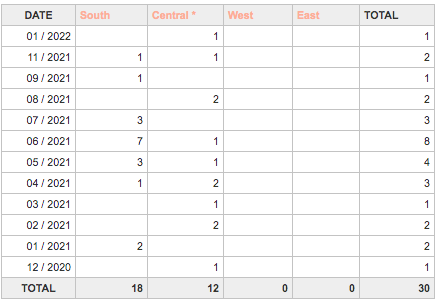
Kate Needs: Recommendations of songs that have the same beat as Livin’ La Vida Loca. Give Kate recommendations to FuseKate8@gmail.com.
Betsy Recommends: The Netflix show Is It Cake?
Filed under: Fuse 8 n' Kate
About Betsy Bird
Betsy Bird is currently the Collection Development Manager of the Evanston Public Library system and a former Materials Specialist for New York Public Library. She has served on Newbery, written for Horn Book, and has done other lovely little things that she'd love to tell you about but that she's sure you'd find more interesting to hear of in person. Her opinions are her own and do not reflect those of EPL, SLJ, or any of the other acronyms you might be able to name. Follow her on Twitter: @fuseeight.
ADVERTISEMENT
ADVERTISEMENT
SLJ Blog Network
2024 Books from Pura Belpré Winners
Winnie-The-Pooh | Review
Parsing Religion in Public Schools
Finding My Own Team Canteen, a cover reveal and guest post by Amalie Jahn
ADVERTISEMENT








Awarded only six years before my birth. Boy, have we come a long way . . . or have we? Thank you for educating me. today. I have a copy of each Caldecott in my storage locker and will definitely pull this one out to take a close look. I believe it is very important to know the events in our history and that includes our children’s literature history, too. My guess is that all committee members responsible for this choice are no longer living. Many of us have asked for some sort of disclosure from committee processes over the years. Can you point me to a resource for the award acceptance speeches or any writing surrounding this book and/or award?
Finding anything on this book is difficult, historically. The Caldecott speech, however, should be in a book of collected talks. I’ll look into it.
Just as I was feeling smug about having already removed They Were Strong and Good from my school’s collection, I came across An American ABC, by Maud and Miska Petersham, on the shelf, proudly wearing its Caldecott spine label. In it, “Young George Washington” rides bareback past an appallingly-depicted enslaved boy, and Daniel Boone explores the “home of tribes of redskins with tomahawks and war paint.” Though the book hadn’t circulated in years, I am still ashamed that I hadn’t examined this book years ago-or at least last year when “we” called out Dr. Seuss!
And let’s not forget the D’Aulaires take on Abraham Lincoln. That won a Caldecott too and the “happy” enslaved people scene makes it a possible candidate for Worst Caldecott.
Thank you to Betsy for writing about this little known book. Yes, it is truly awful, partly because it has a tone of cruelty that borders on caricature. While there are many, many books from that era that today we recognize as racist, some of them stem from ignorance or paternalism. This one does not. In particular, the whole idea that it sends a message of “goodness” is actually contradicted by the book itself. “Strong,” perhaps, in a brutal way, but not good.
Now I have to respond to your suggesting that Dr. Seuss’s work is the equivalent. It is not. If you look at Geisel’s long career and life, that is simply not the case. Eagerness to call out racism should not result in dissolving all distinctions between authors.
Thank you for your comments, Emily. The pairing of “strong” alongside “good” is fascinating. I think we could have whole essays written on the title of this book alone.
As for Seuss, just as Lawson was capable of the miraculous work in Ferdinand (a pacifism book if ever there was one), so too was Seuss capable of both highs and lows. The beauty of his Lorax is wonderful and he did some truly great work in his time. But If I Ran the Zoo is a distinct low point and is the most offensive picture book I’ve ever accidentally read to my kids. Seuss requires much conversation, it’s true.
It reminds me of the wise words of my favorite podcaster Michael Hobbs. “No one ever got a statue named after them for saying, ‘It’s complicated’.”
I found this one in our biographies (!) during a recent weeding project, our original copy from when the library opened in the 60s, and I don’t know if I’ve ever tossed something in the discard pile with such quickness. It was still circulating, but whew.
Biographies!! That sort of takes the whole fictionalized nonfiction idea to a different level. Wowzah!